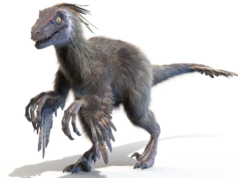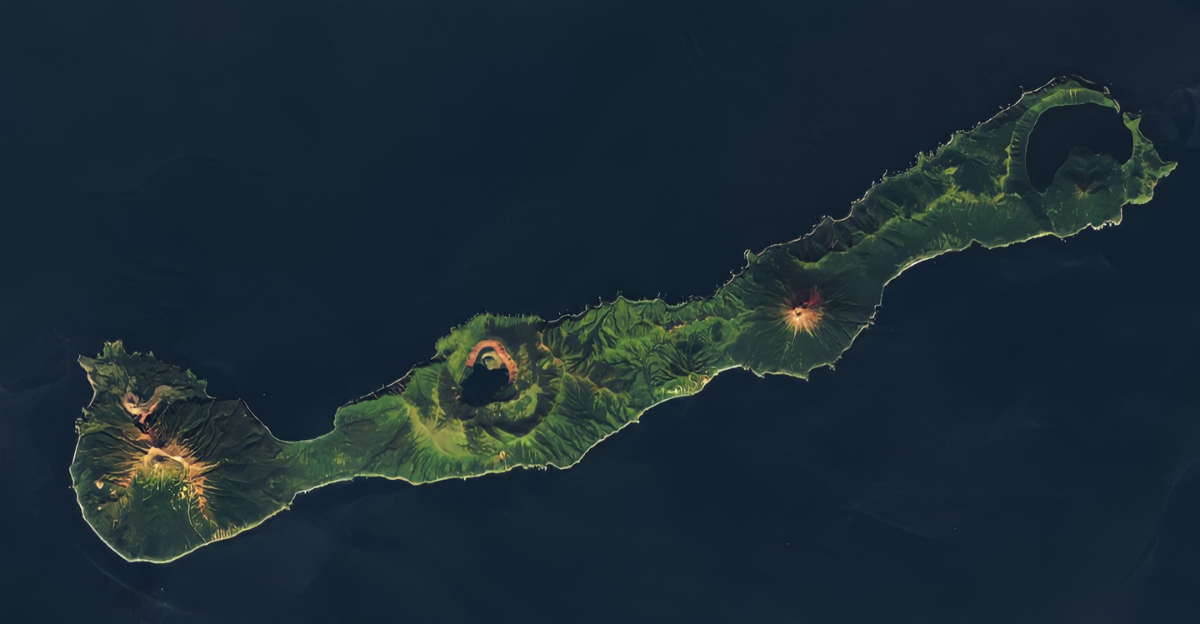
A dramatic satellite image captured in September 2024 reveals four giant volcanoes aligned end-to-end on the Russian island of Simushir, part of the Kuril Islands. These volcanoes — Milna, Zavaritski, Prevo, and Uratman — are evenly spaced along the island’s 8-kilometer-long length, producing a rare natural formation that can be observed from space.
Simushir’s volcanic landscape is not only beautiful to look at, but one of the peaks on the island was the site of a major eruption that affected the global climate nearly two centuries ago. This discovery has renewed interest in the island’s geological and geopolitical past.
Simushir: A Remote Island with a Secret Soviet Past
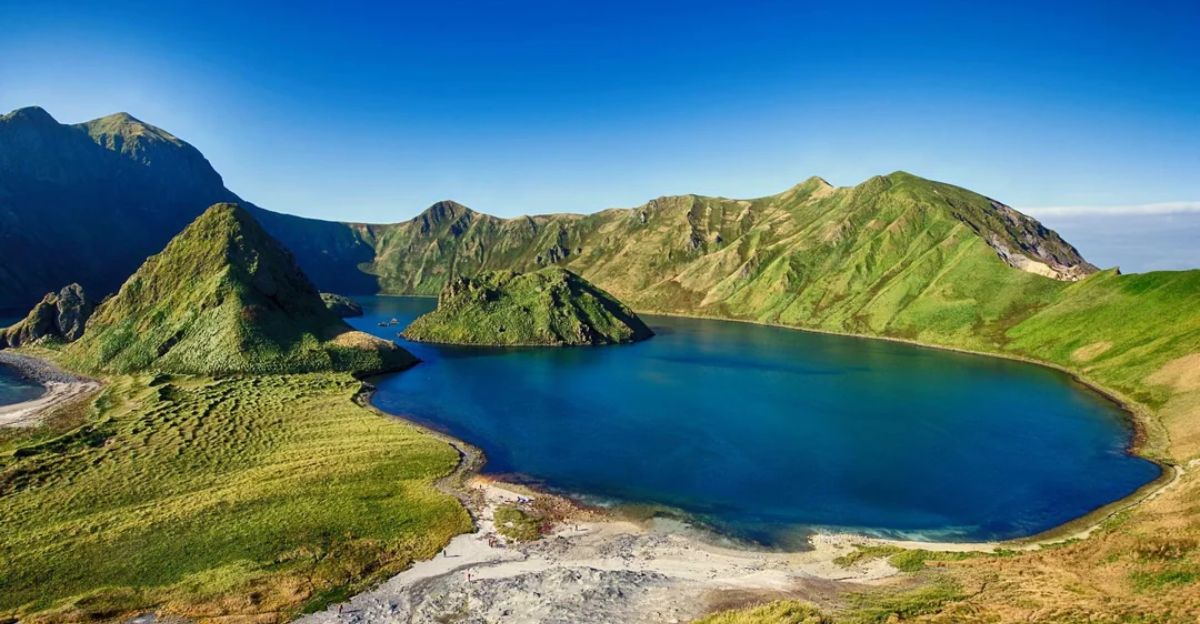
Simushir is an isolated island in the North Pacific Ocean. It is part of the Kuril Islands, an island chain long disputed by Russia and Japan. The island used to be the site of a covert Soviet-era naval base that was mainly used for nuclear submarine operations until 1994.
Today, it remains uninhabited, its rugged terrain dominated by towering volcanoes and deep lagoons. The remoteness of the island appears to have delayed any discovery of its volcanic activity, even the 1831 eruption, which had some far-reaching climatic consequences but went unnoticed for decades.
The Four Giants: Milna, Zavaritski, Prevo, and Uratman

Simushir’s four main volcanoes each have unique features. Milna, the highest at 1,540 meters, last erupted in 1914. The 624-meter-high Zavaritski erupted in 1957 and features a hollowed crater.
Prevo, at 1360 meters, last erupted in 1825, while Uratman, at 678 meters, has shown no eruption signs for over 12,000 years. These volcanic mountains create a natural line-up that is both geologically intriguing and visually dramatic, with each peak contributing uniquely to the island’s volcanic history.
A Hidden Fifth Volcano: Goriaschaia Sopka

In addition to the four main volcanoes, Simushir hosts a smaller fifth volcano named Goriaschaia Sopka. Located on the northeast flank of Milna, this volcano is difficult to distinguish in satellite images due to its proximity to the larger Milna peak.
Despite being classified separately, Goriaschaia Sopka and Milna are closely linked geologically. This subtle detail complicates the island’s volcanic system and emphasizes the complex nature of volcanic features in this remote environment.
The Kuril Islands
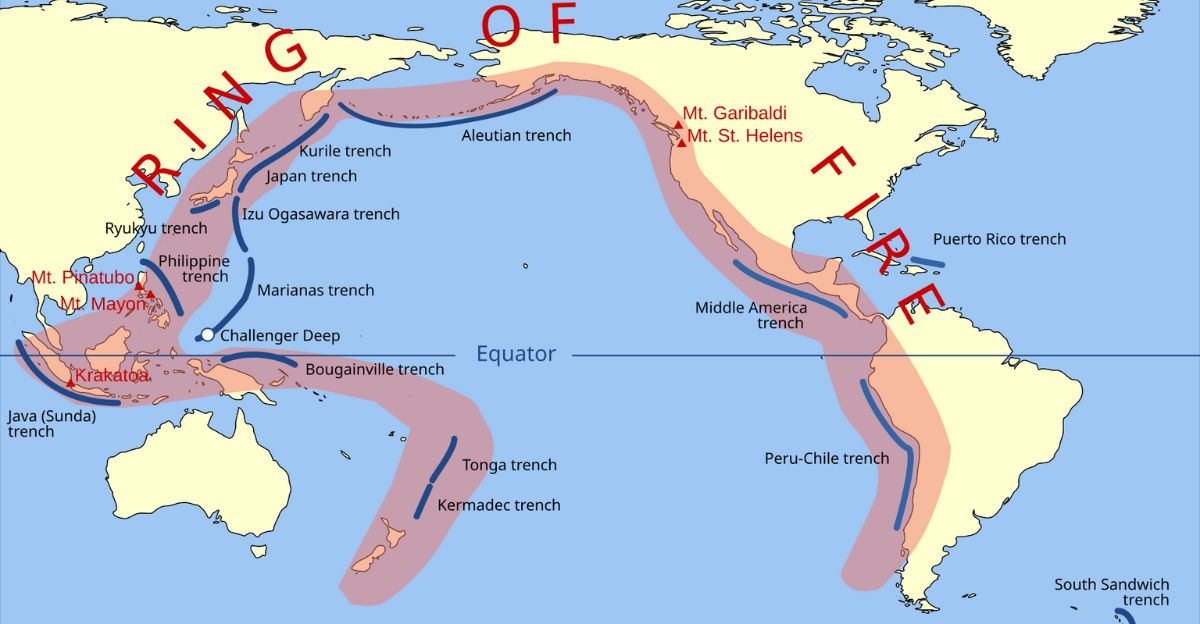
Simushir and its neighboring islands are part of the Pacific “Ring of Fire,” a 40,000-kilometer arc of intense tectonic activity that encircles the Pacific Ocean. This zone is home to about two-thirds of the world’s terrestrial volcanoes and accounts for 90% of global earthquakes.
The Kuril Islands’ position on this volatile boundary explains their frequent volcanic eruptions and seismic events. Simushir’s volcanoes are a vivid example of the dynamic geological forces shaping this region, making it a key area for studying volcanic activity and tectonic movements.
The 1831 Eruption: A Climate-Altering Mystery
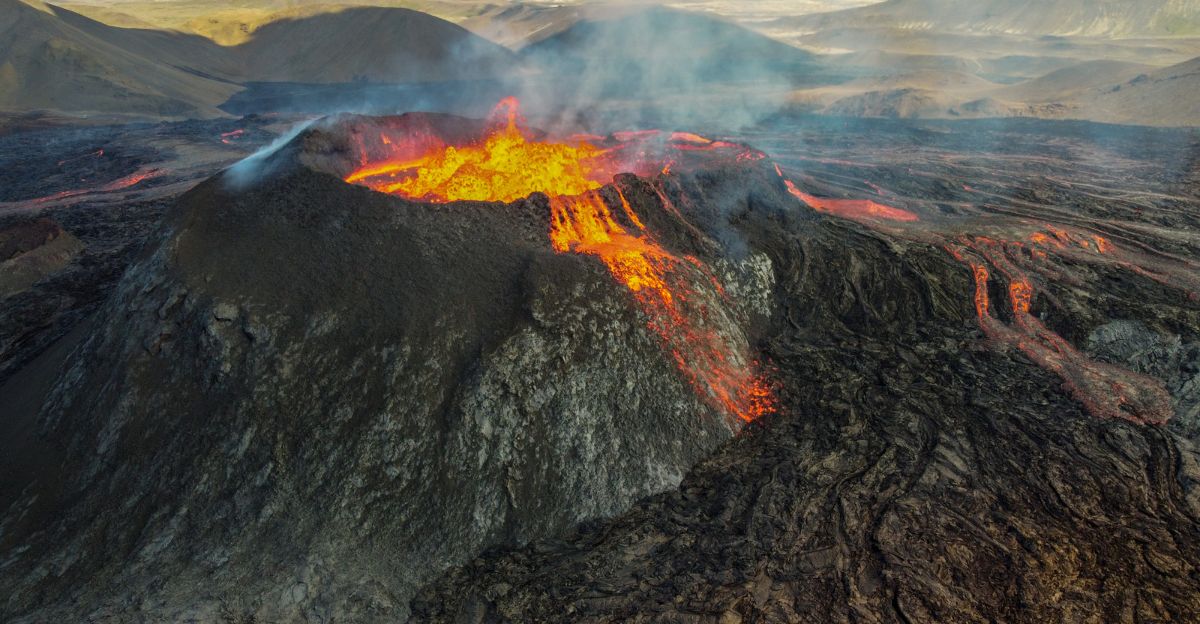
In 1831, an enormous volcanic eruption led to a dramatic cooling of the climate in the Northern Hemisphere, which lost around 1 degree Celsius. This event led to gloomy skies and unusual sun colors, and the volcano responsible went unidentified for almost two centuries.
The eruption’s scale was so large that it affected weather patterns and ecosystems far beyond its remote location. Yet, due to the island’s isolation and lack of eyewitness accounts, its source was a mystery.
Zavaritski: The Surprising Culprit Behind the 1831 Eruption

Recent research published in late 2024 has identified the Zavaritski volcano as the source of the 1831 eruption. Scientists have now linked ash deposits identified in polar ice cores to volcanic material from Zavaritski, verifying its contribution to the climate event.
Historians had no records of Zavaritski ever having been associated with a major eruption, so the find was surprising. The discovery highlights how remote and inaccessible regions can hold secrets that reshape our perception of Earth’s volcanic past.
The Impact of the 1831 Eruption on Global Climate
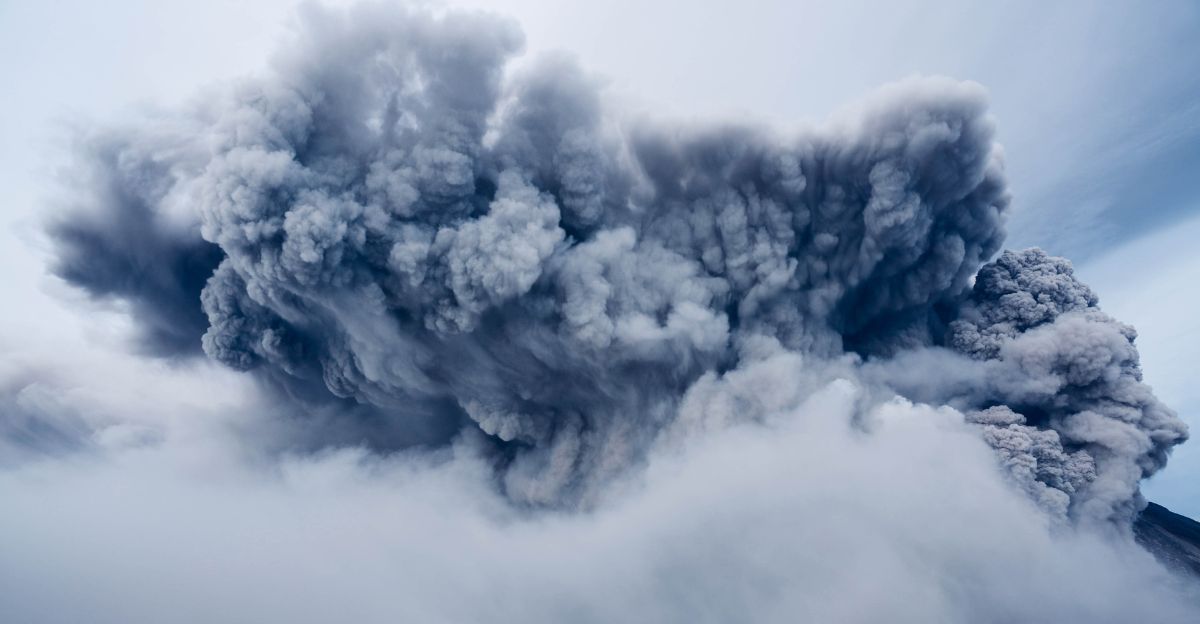
The eruption of Zavaritski in 1831 had significant climate ramifications on the Northern Hemisphere, disrupting normal weather patterns. This cooling period affected agriculture, ecosystems, and human societies by shortening growing seasons and triggering unusual atmospheric phenomena.
The eruption’s climatic impact demonstrates how volcanic activity can affect global systems, reminding us of the interconnectedness between geology and climate. Understanding such events helps scientists better predict future volcanic hazards and their potential environmental consequences.
Simushir’s Volcanic Legacy and Modern Scientific Interest
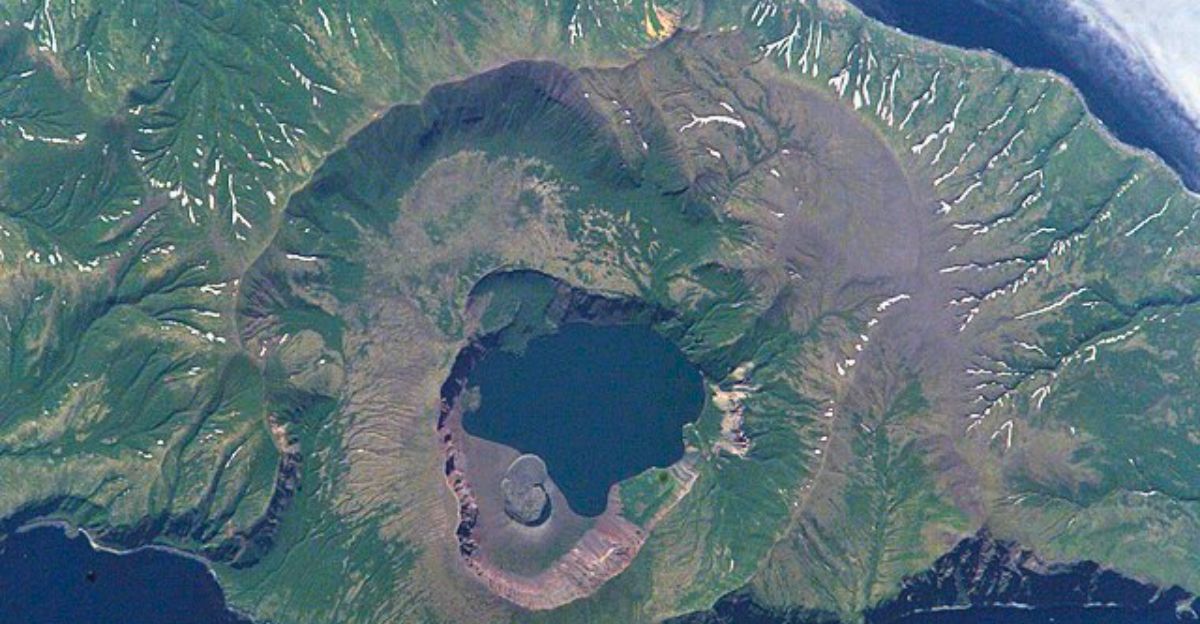
The unusual combination of Simushir’s volcanoes and its historical climate significance has made it a focus of modern geological research. Scientists continue to study the island’s volcanoes to understand their eruption patterns, potential risks, and contributions to Earth’s climate system.
The discovery of the 1831 eruption’s source also illustrates the importance of satellite images and ice core analysis in uncovering hidden volcanic activity. Simushir stands as a natural laboratory for exploring volcanic processes and their broader impacts.
From Secret Soviet Base to Scientific Spotlight

Once a secretive Soviet naval base, Simushir has been transformed from a Cold War relic into a site of scientific fascination. The island’s volcanic features, combined with its geopolitical history, create a compelling narrative of mystery, discovery, and natural power.
As new technologies reveal more about this remote island, Simushir’s quadruplet volcanoes continue to captivate researchers and the public alike, reminding us that even the most isolated places on Earth can have global significance.
Explore more of our trending stories and hit Follow to keep them coming to your feed!

Don’t miss out on more stories like this! Hit the Follow button at the top of this article to stay updated with the latest news. Share your thoughts in the comments—we’d love to hear from you!



